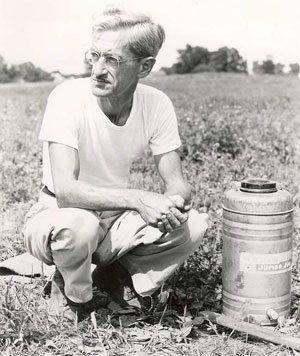<Back to Index>
- Archaeologist Glenn Albert Black, 1900
- Poet Nur ad-Din Abd ar-Rahman Jami, 1414
- Prime Minister of the United Kingdom John Russell, 1792
PAGE SPONSOR

Glenn Albert Black was an influential archaeologist of the United States who was the first professional to study Indiana prehistoric sites. He was born 18 August 1900 in Indianapolis, Indiana and died 2 September 1964.
Black began serious archaeological work before there were many training opportunities in archaeology in the United States. He did not receive a college degree until the award of an honorary degree from Wabash College in 1951. He is considered to have been the only professional archaeologist focusing on Indiana ancient history until the 1960s. He is primarily responsible for the identification of thousands of Native American archaeological sites in the area, including the Angel Mounds, which he brought to national attention. It was designated a National Historic Landmark in 1964.
Black is best known for his posthumously published two-volume study of the Angel Mounds near Evansville, Indiana, and their cultural tradition. He operated a field school at the site. His innovative excavations inspired the University of Chicago Field School, one of the few training programs in archaeological field techniques in the United States in the early 20th century. Black is also notable for investigating the veracity of the Walam Olum creation account through archaeological means.
In addition to leading and reporting on excavations, he served in the Society for American Archaeology as President (1941 - 1942), Vice President (1939 - 1940), and Treasurer (1947 - 1951). The Glenn A. Black Laboratory of Archaeology at Indiana University, established in 1971, is named for him.